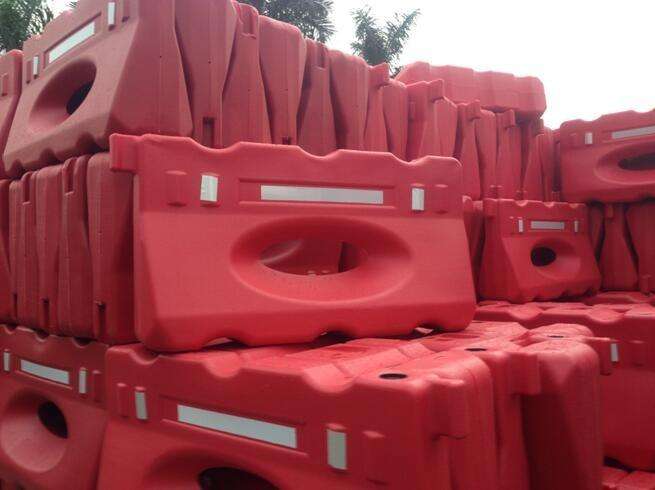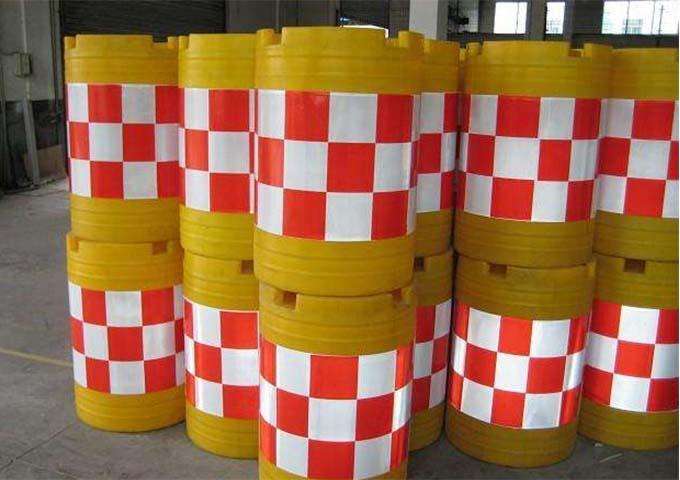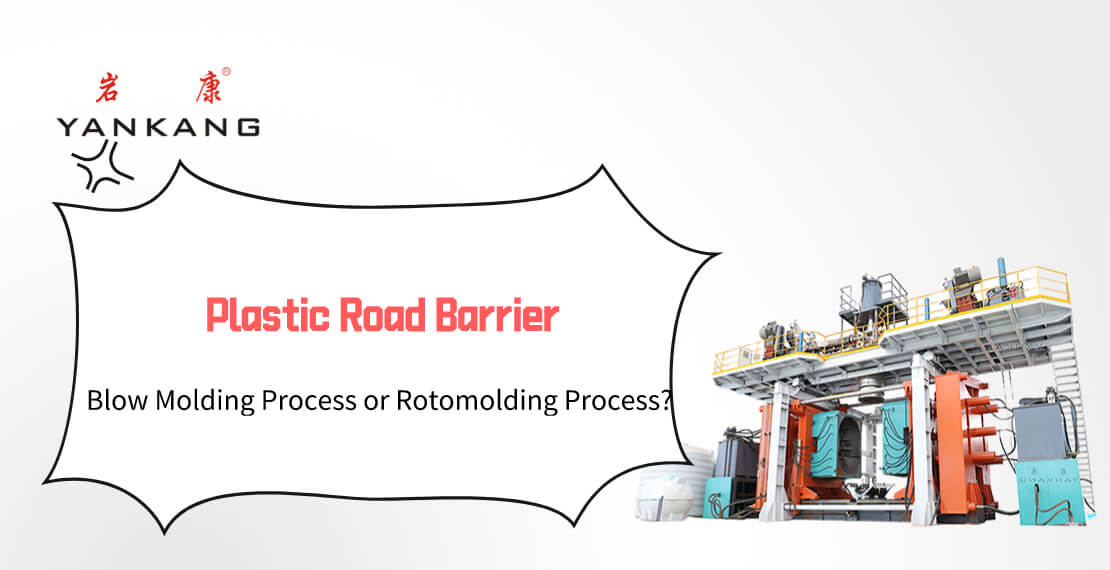Whether the plastic road barrier is better for blow molding or rotomolding has always been an issue of constant debate in the plastic products industry.
The plastic road barrier is also called isolation barriers. Commonly used are cement barriers, fiberglass barriers, and plastic road barrier. Isolation barriers are mainly used for transportation facilities and play a protective role. The main thing to be discussed today is plastic road barrier.
The plastic road barrier of the blow molding process can make the barrier wall thickness more uniform and useless material. Because it is high-density polyethylene, it has better stretchability, so it can be recycled more frequently.
Rotomolding is low-density polyethylene, which is easily broken after being impacted due to material properties. However, the production machine cost of rotationally molded barrier barriers is lower, and the shapes can be diversified. For example, a crown-like shape can be added to the top to make the barriers look more beautiful and eye-catching.
Next, for the question of whether the plastic barrier is a good blow molding process or a rotomolding process, we will make a detailed comparison from the four aspects of the process, cost, product appearance, and mold.
Process comparison:
The rotational molding process is to first add plastic raw materials into the mold, and then the mold is continuously rotated along two vertical axes and heated. Under the action of gravity and thermal energy, the plastic raw materials in the mold are gradually uniformly coated and melted and adhered to the mold. On the entire surface of the cavity, it is molded into the required shape, and then cooled and shaped into a product.
The blow molding process first extrudes the tubular parison, cuts off a section of the tube embryo and puts it in the mold, closes the split mold, clamps the upper and lower ends of the embryo at the same time, uses a blow tube to blow in compressed air to inflate the parison and maintain the pressure Cool down and shape.
Cost comparison:
Rotomolding molds are expensive;
The cost of blow molds is low. For products of the same size and size, the cost of blow molds is about 1/4 of the cost of rotational molds.
Appearance comparison:
Rotomolding products have good edge strength. Rotomolding can achieve a product edge thickness of more than 5 mm, which completely solves the problem of thinner edges of hollow products; rotomolding can also place various inserts; rotomolding products can have very complex shapes and The thickness is more than 5 millimeters; rotomolding can produce fully enclosed products.
Blow-molded products can be designed in multiple layers, filled with foam materials, to achieve heat preservation.
Mold comparison:
Rotomolding does not need to adjust the mold, and the wall thickness of rotomolding products can be adjusted freely. The product is hollow and seamless, but the wall thickness can be adjusted to give the product high strength. It can also provide a variety of surface pattern treatments to produce various color products, which can be used for anti-ultraviolet and anti-aging treatments, as well as a variety of stone and wood simulation effects.


The blow mold has a simple structure, low investment, and easy operation. It is suitable for hollow blow molding of various plastics; the disadvantage is that the wall thickness of the parison is uneven and the production efficiency is low.
Yankang Plastics Machine is a large-scale hollow blow molding machine manufacturer that does a good job of plastic isolation barriers in the blow molding process. It also has an independent production workshop. Equipment and molds can be produced independently, which can achieve a perfect fit between equipment and molds.
After comparing the above several aspects, it can be found that whether the plastic road barrier is a good blow molding process or a rotomolding process is not an absolute conclusion, and it must be treated objectively. Here is just a brief discussion of two different processes. You still have to choose according to your actual situation.

